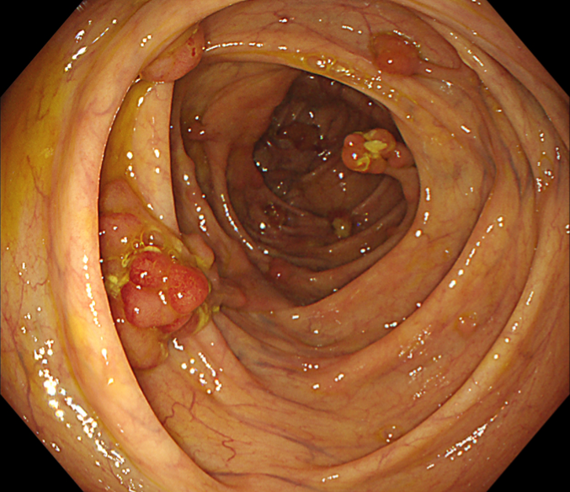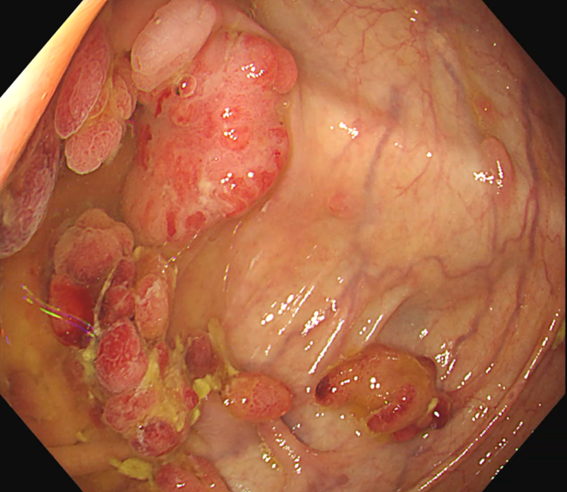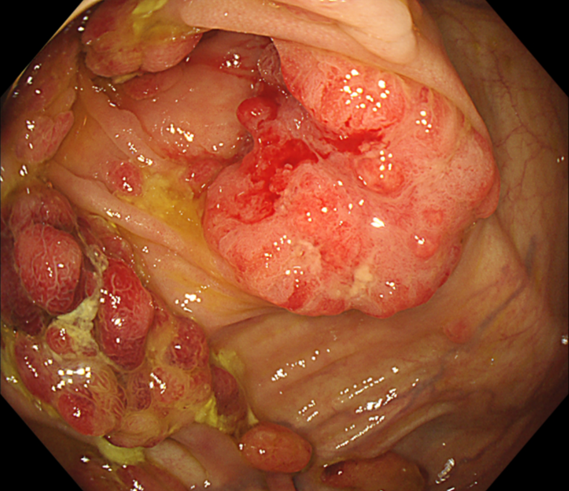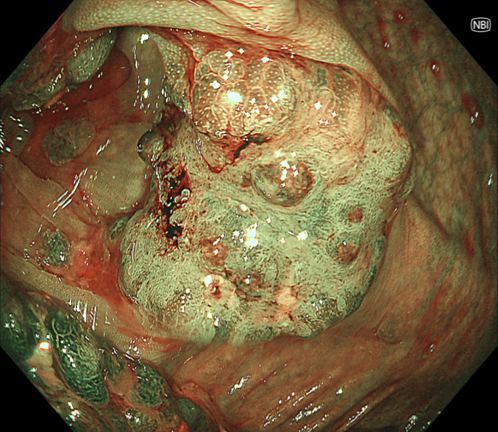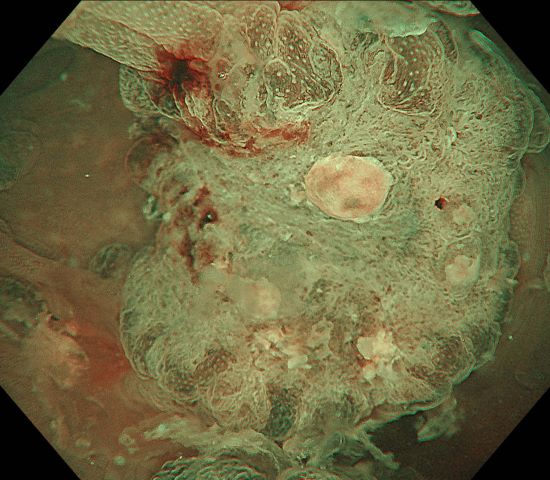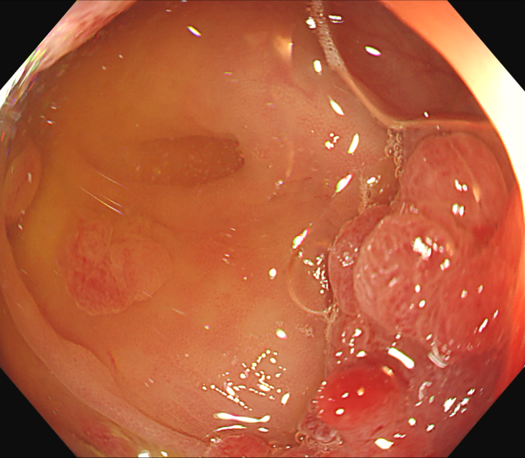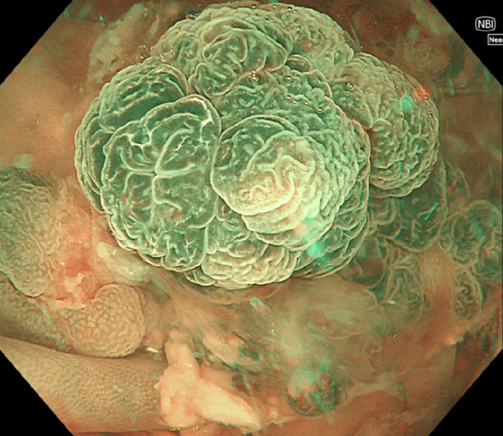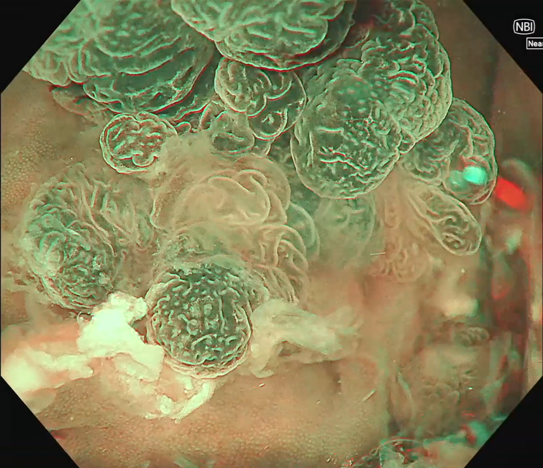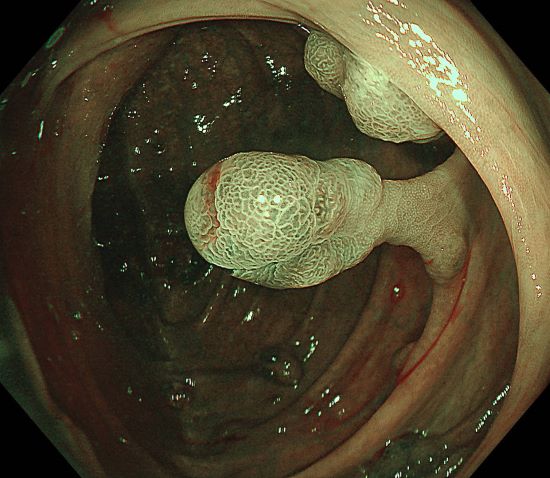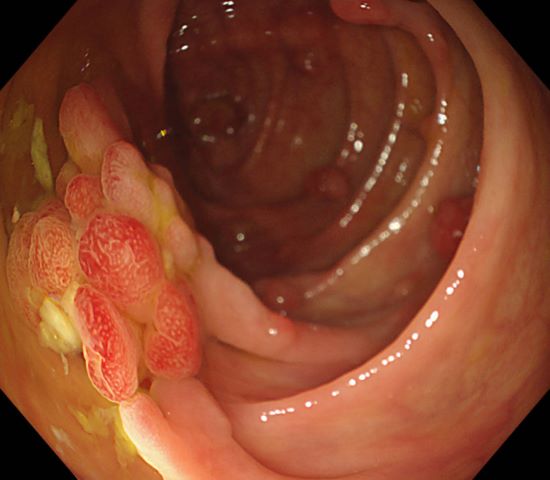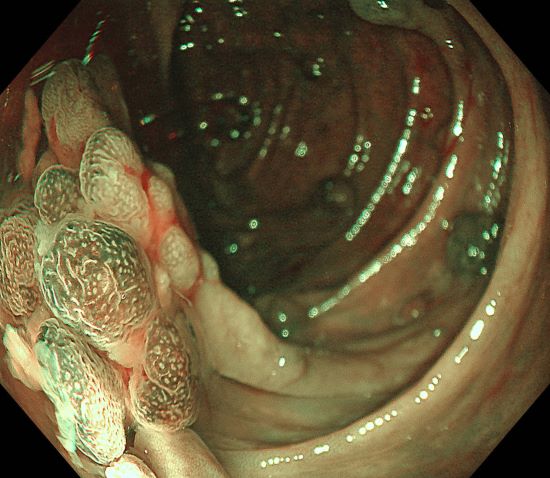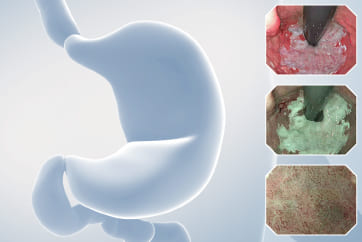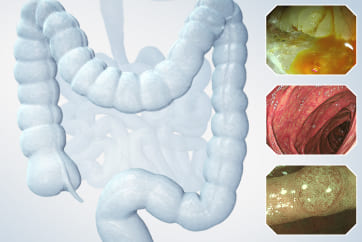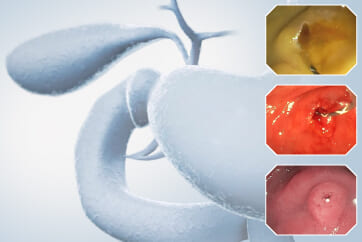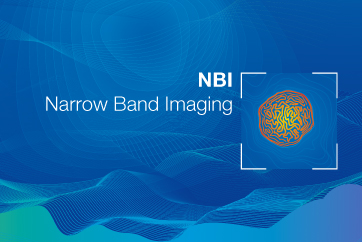Colorectal Case 29

Prof. Dr. Hu Xiao
Colon
Sichuan Provincial People’s Hospital,China
Scope: CF-HQ290I
Case: Multiple lesions in ascending colon
Organ: Ascending colon
Patient Information: M, 49
Medical History: Polyps were found in rectum 7 years ago, polypectomies were done multiple times
9. NBI observation
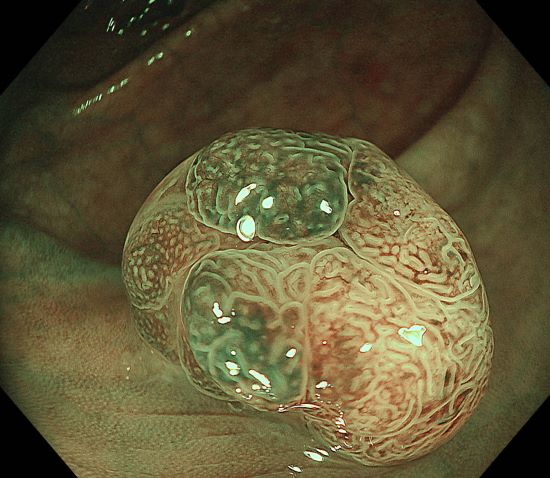
0-Is lesion in ascending colon, lobulated, anal side of the lesion showed type IV PP, the central part of the lesion was blue colored, the IP was significantly widened, the PP was short rod-shaped, strip-shaped, the opening of the glandular ducts on the oral side of the lesion was more dense, PP showed type III~IV
Case video
Overall Comment
49 years old male patient with multiple polyps found in the rectum 7 years ago. His mother has a history of rectal cancer (alive), his uncle had a history of ascending colon cancer (passed away), and no abnormality was found during gastroscropy. Polypectomy had been performed three times in 2017, 2018, and 2023, polyps were found in ascending colon, ileocecal region, and the sigmoid colon 18cm away from anus and its downstream rectum, mainly in the rectum, there were more than a dozen of 5-15mm 0-Is and 0-Ip-type polyps were seen, in the form of clusters and lobes. After resection, the pathology showed “rectal” serrated adenoma with mild heterogeneous hyperplasia of the glandular epithelium and “rectal polyp” tubular adenoma with low-grade intraepithelial neoplasia of the glandular epithelium and high-grade intraepithelial neoplasia of the glandular epithelium in a focal area (Moderate Dysplasia). The polyps were all located in the ascending colon, the lesions in ileocecal region were suspected to be carcinomatous with deep infiltration, no polyps were found on the anal side of the ascending colon, and the rectum showed scarring from previous polypectomy.
Multiple lesions seen in the ascending colon were multicolored and polyphyletic, with the general morphology of type 0-IIa, type 0-Is, type 0-Ip, partly lobulated or clustered, and mucus cap was seen on the surface of some lesions, and type 0-I lesions were predominantly PP type III-IV,some glandular ducts showed serrated margins, partly granular and chorionic, and partly PP type II. The center of the suspected invasive carcinoma in the ileocecal region was predominantly JNET type 3, with a predominantly PP type I opening at the margin, but with a partly villous structure on the oral side near cecum, JNET type 2A. The final pathology report suggested adenomatous changes in the vast majority of the lesions, and the infiltrating carcinoma in the ileocecal region was moderately differentiated, with muscularis propria involvement and vascular invasion, but there were variations between different pathologists as to the cancerous pathway of the lesions.
Final genetic testing suggested a mutation in the BMPR1A gene, which manifested as hereditary polyposis syndrome type 2 (HMPS2), characterized by mixed hyperplastic, adenomatous, and occasional youthful-type colon polyps, with polyposis eventually progressing to colorectal cancer.
* Specifications, design and accessories are subject to change without any notice or obligation on the part of the manufacturer
Mr. Peter Borch-Johnsen Case 30: Rectal ESD
Prof. Naohisa Yahagi
- Content Type

